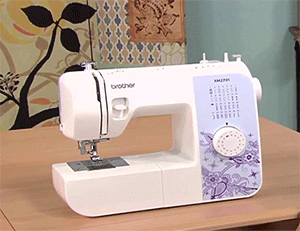 When I was a little girl, I hand-pieced a quilted pillow top. I never made the pillow, but I still have that quilted top. Over the years I’ve continued quilting, but have moved my piecing tasks to my sewing machine. The work moves along at a faster pace and I’m more likely to finish my projects instead of leaving a box of unfinished projects for my children to finish….or throw away. Some sewing machines are better equipped to handle quilting. We covered what you should consider when buying a sewing machine for quilting in this blog post. Let’s talk a little more about the qualities that make a good sewing machine for quilting.
When I was a little girl, I hand-pieced a quilted pillow top. I never made the pillow, but I still have that quilted top. Over the years I’ve continued quilting, but have moved my piecing tasks to my sewing machine. The work moves along at a faster pace and I’m more likely to finish my projects instead of leaving a box of unfinished projects for my children to finish….or throw away. Some sewing machines are better equipped to handle quilting. We covered what you should consider when buying a sewing machine for quilting in this blog post. Let’s talk a little more about the qualities that make a good sewing machine for quilting.
- Knee lift – One feature that isn’t typically found on sewing machines with lower price points is the knee lift. This feature allows you to raise the presser foot without taking your hands off of your work. A knee lift is just that – a lever you lift with your knee. It is very convenient and once you get used to using it, it can be hard to sew without one.
- Extension Table – An extension table will make it easier to handle large amounts of fabric and keep your seams smooth, even and skip-free.
- Darning foot & free motion quilting foot – These feet may not come with the machine when purchased, but if you are going to do free motion quilting, you will want to make sure they are available for your machine. The darning foot might look a little odd as it typically takes the shape of a C or O and is only there to prevent the fabric from coming up with the needle as your hands (instead of the feed dogs) guide your fabric under the needle. The free motion quilting foot has the same purpose, but looks a little more like a standard presser foot with a very large opening for the needle area. This foot is also referred to as Big Foot.
- Walking foot – Differential feed can make a mess of a long seam. Have you ever gotten to the end and found that despite pinning and holding the pieces of fabric tightly between your fingers, somehow one side of the fabric is longer than the other? That is differential feed at work. The feed dogs feed the lower fabric under the needle the tiniest bit faster than the upper fabric. With some seams it doesn’t make much difference, but on detailed work or when quilting, the results can be disastrous. This is where a walking foot comes in. It regulates the feed so that both top and bottom fabrics stay aligned and move under the needle at the same pace.
- Quilt guide – This little “L” shaped bar fits behind the walking foot and is lowered to follow your last top stitch line in machine quilting. You set the distance between the bar and the foot to provide the width between quilting rows and by watching the bar and guiding it over the previous row, your next row of stitching follows the line and remains at the proper width.
- 1/4 inch seam foot – This foot can replace the necessity of marking seam allowances. The foot has a guide and markings so you know just where to place your fabric and when to pivot at corners to maintain your 1/4 inch seam allowance.
- Large throat area – If you are going to be working on large projects you will be much happier if your sewing machine has enough space in which to push your project through. Even the most carefully rolled and secured quilt can be difficult to maneuver through. Keep this in mind if you are in the market for a new sewing machine.
- Straight and zigzag stitches – While a large number of stitches on a sewing machine can add to your fun when finishing off a project with decorative stitches, to quilt by machine you really only need two stitches – straight and zigzag. Straight stitches are used to piece and quilt your project and zigzag stitches are used for buttonholes, appliques and sometimes in securing raw edges.
There are other machine details or attachments that might help with quilting, but these are essential if you plan to do any amount of quilting on your sewing machine.





